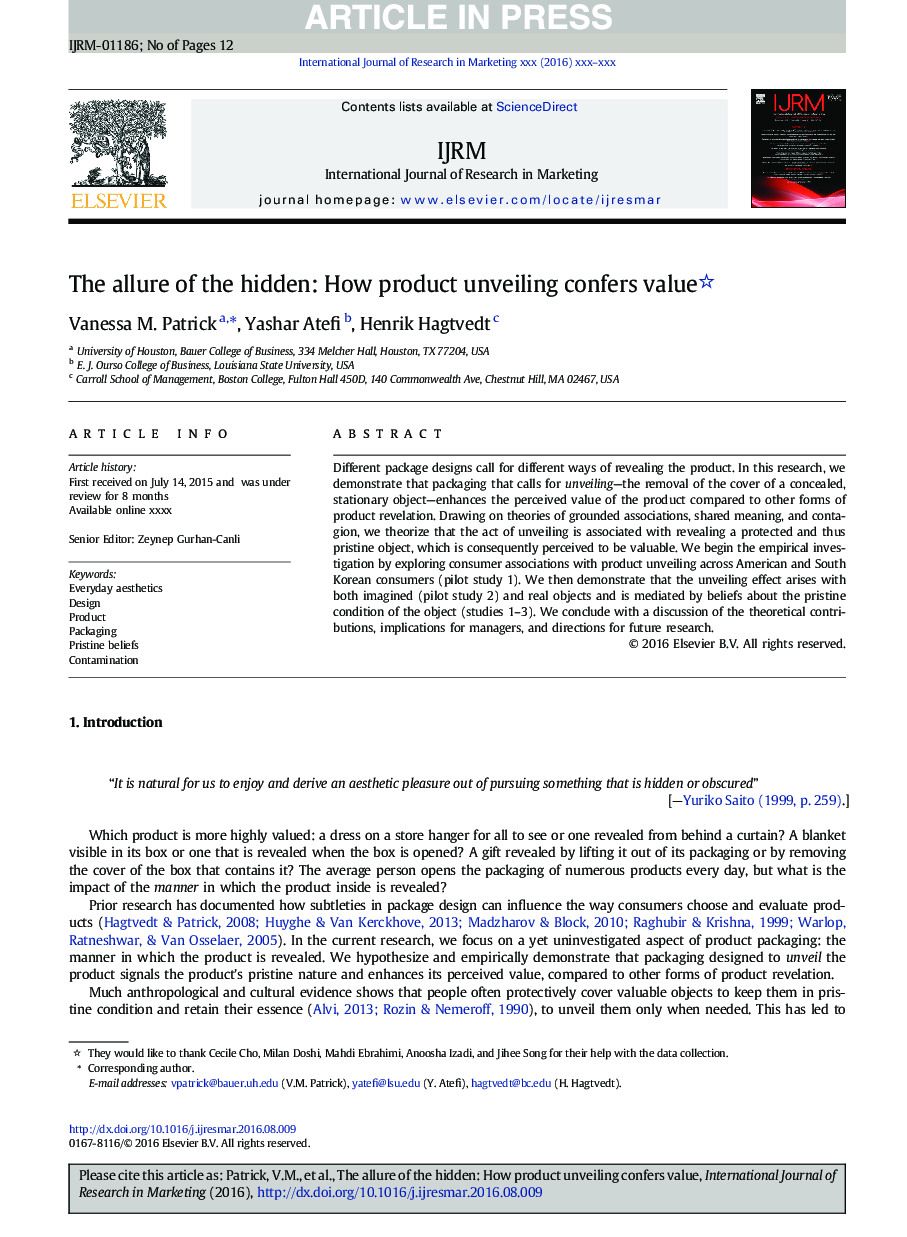| Article ID | Journal | Published Year | Pages | File Type |
|---|---|---|---|---|
| 5033743 | International Journal of Research in Marketing | 2017 | 12 Pages |
Abstract
Different package designs call for different ways of revealing the product. In this research, we demonstrate that packaging that calls for unveiling-the removal of the cover of a concealed, stationary object-enhances the perceived value of the product compared to other forms of product revelation. Drawing on theories of grounded associations, shared meaning, and contagion, we theorize that the act of unveiling is associated with revealing a protected and thus pristine object, which is consequently perceived to be valuable. We begin the empirical investigation by exploring consumer associations with product unveiling across American and South Korean consumers (pilot study 1). We then demonstrate that the unveiling effect arises with both imagined (pilot study 2) and real objects and is mediated by beliefs about the pristine condition of the object (studies 1-3). We conclude with a discussion of the theoretical contributions, implications for managers, and directions for future research.
Keywords
Related Topics
Social Sciences and Humanities
Business, Management and Accounting
Marketing
Authors
Vanessa M. Patrick, Yashar Atefi, Henrik Hagtvedt,
